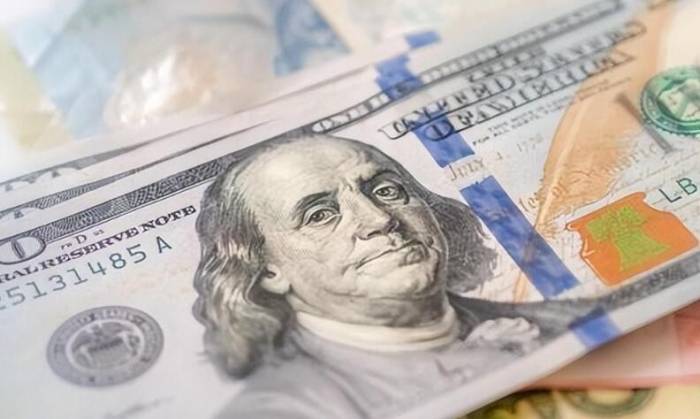The extent of the interest rate cut in September will ultimately depend on the economic data that will be released soon. If these data reveal downward pressure on the economy, it may amplify the basis points by which the Federal Reserve cuts interest rates.
The Federal Reserve has been continuously signaling rate cuts recently, especially with Fed Chairman Powell declaring at the Jackson Hole Global Central Bank Annual Meeting in August that "the time for policy adjustment has come," significantly raising market expectations for a rate cut in September. It is also believed that the September rate cut may only be the beginning of a new round of rate cuts, potentially extending to 2025.
From 2022 to 2023, the Federal Reserve continued to raise interest rates, reaching the largest increase since 1981, with the federal funds rate target range maintained at a high level of 5.25% to 5.50%.
In mid-August, the U.S. Bureau of Labor Statistics released a report, revising down the number of new jobs added in the statistical period from April 2023 to March 2024 by 818,000 compared to previous estimates, a decrease of nearly 30%. Previously released data showed that the U.S. unemployment rate had risen from a low of 3.4% in April 2023 to 4.3% in July 2024.
Advertisement
The market has long been calling for the Federal Reserve to cut interest rates.
Since July, influenced by factors such as the easing of inflationary pressures in the U.S. economy and the emergence of downward economic pressure, the market has speculated that the Federal Reserve will cut rates within the year. The U.S. dollar index has dropped from 106 to around 100. U.S. Treasury yields have also been declining, with the 10-year Treasury rate falling from a previous high by about 90 basis points to around 3.8%. However, it was not until the U.S. unemployment rate triggered the "Sam Rule" (an indicator used to predict economic recessions, which is considered a possible signal of economic recession when the three-month average of the unemployment rate rises by 0.50 percentage points above the lowest value of the past 12 months) that the Federal Reserve signaled an upcoming rate cut. In the view of some economists, the Federal Reserve has already missed the best time to cut rates.
Historically, during every economic recession, the Federal Reserve has significantly cut interest rates, such as in the early 1990s, the early 2000s, and after the global financial crisis in 2008, with the Fed's rate cuts reaching 500 basis points. However, considering that the recent U.S. inflation rate remains above 3.2%, it may affect the extent of the Federal Reserve's rate cuts.
According to the CME "FedWatch," the probability of the Federal Reserve cutting rates by 25 basis points in September is 69%, and the probability of a 50 basis point cut is 31%. The probability of the Federal Reserve cutting rates by a total of 50 basis points by November is 50%, by 75 basis points is 41.5%, and by 100 basis points is 8.5%.
The extent of the rate cut in September will still depend on the economic data to be released soon, such as the U.S. JOLTs job openings in July, U.S. non-farm employment data for August, and August CPI data. If these data reveal downward pressure on the economy, it may amplify the basis points by which the Federal Reserve cuts interest rates. Previously released data showed that the U.S. personal consumption expenditure (PCE) price index for July remained at an annual rate of 2.5%, and the PCE price index also remained at 2.6%. In July, non-farm employment increased by 114,000 jobs, the lowest record since December 2020, significantly below expectations, further amplifying expectations for a rate cut in September.
At the mid-August meeting, Powell stated, "The timing and pace of rate cuts will depend on future data, the evolving outlook, and the balance of risks." "As progress is made towards the price stability goal, the Federal Reserve will do everything to support the labor market." This means that although the extent of the rate cut is yet to be determined, after entering the rate-cutting channel, the focus of future Federal Reserve policy will shift from controlling inflation to boosting employment.Considering that the impact of the Federal Reserve's policy adjustments on the economy has a certain lag, it takes some time to be transmitted to actual economic activities. The effects of the Federal Reserve's interest rate cut in September may gradually emerge in 2024. During this process, the U.S. economy will still face certain pressures.

As the Federal Reserve's interest rate cut comes into effect in the future, the U.S. will join the ranks of developed countries that have cut interest rates. Previously, central banks including the Bank of England, the European Central Bank, the Riksbank of Sweden, and the Swiss National Bank have already begun to lower interest rates. The global market will enter a more accommodative monetary environment, and global commodity prices will experience a round of volatile upward movements. In particular, gold futures prices have reached historical highs with the continuous support of central banks around the world. However, international oil prices have not seen a significant increase under the relatively loose market supply and demand conditions.
Leave A Comment